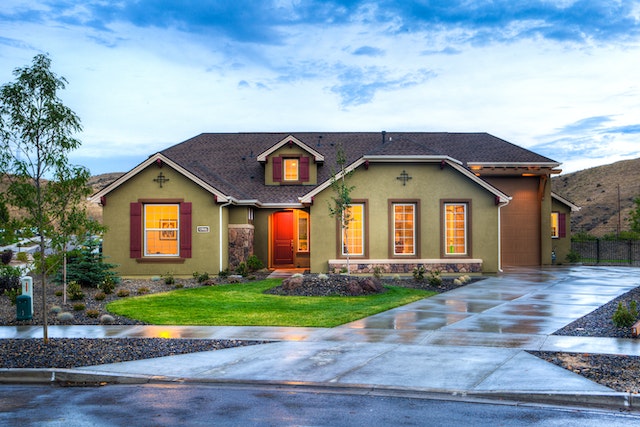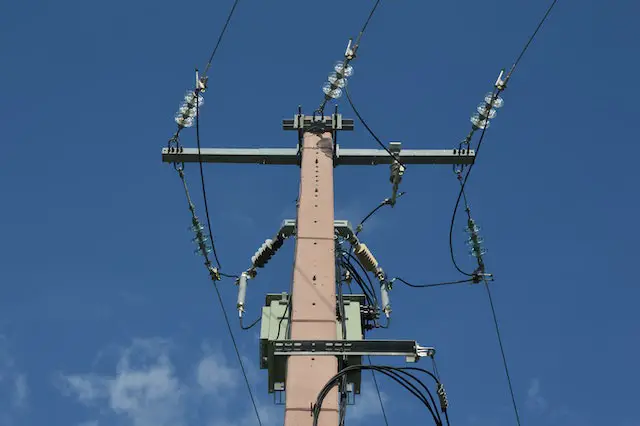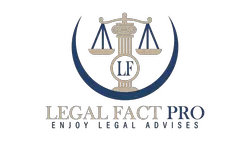
Who Owns the Utility Pole on My Property? A Comprehensive Guide
The contents of this web page are for informational and educational purposes only, and nothing you read is intended to be legal advice. Please review our disclaimer before taking action based upon anything you read or see.
Who owns the utility pole on my property? This post will aid you immensely if you are among those who usually ask this question.
Modern civilization is the same with utility poles, the main infrastructure for cellphone service, power, and other public utilities. Utility pole ownership has thus grown to be a crucial subject with several legal issues.
Many landowners must know the complexities of utility pole possession and the laws controlling their usage. To maintain a continuous supply of services, utility pole owners must traverse complicated rules and standards, manage liability risks, and safeguard natural resources.
Determining the ownership of a utility pole on your property can depend on various factors, including local regulations and agreements with utility companies. In many cases, utility poles are owned and maintained by the utility companies themselves, regardless of their location. However, it is advisable to consult your local municipality or contact the utility company directly for accurate information regarding ownership and responsibilities related to the utility pole on your property.
Understanding Utility Poles and Their Purpose

Utility poles are high, woody, or metal poles that line roadways and highways and support electricity lines and other telecommunication wires, including cable TV, phone, and computer. These poles are crucial in delivering communications and power to residential and business customers.
Utility poles are also essential for effective and secure electricity distribution across regions. This is true because they enable the efficient conveyance of high-voltage power across great distances. Additionally, they provide a solid base for communication lines, allowing individuals to use TV, phone, and broadband connections in their residences and places of business.
How to Determine Ownership of the Utility Pole on your Property
Knowing who possesses the utility pole on your property is crucial to determine who is in charge of maintaining and fixing the pole. Property owners must maintain private utility poles while the utility provider controls public utility poles. Knowing who owns the pole helps you evaluate if you are responsible for any harm or accidents the pole may cause. The following methods may be used to establish who owns the utility pole on your property:
Examine your real estate documents and deeds
Checking your real estate titles and documentation is one approach to finding out who owns a power pole on your property. Normally, information regarding any easements or privileges of way given to utility providers is included in property documents.
You may check with your district clerk’s office or engage a title firm to search on your behalf if you need clarification about where to go for the land deeds and papers. The property records databases for your county or state allow you to search for information about your property online.
You should carefully check your property titles and documentation when you’ve discovered them to find any permits or rights of way given to utility providers. These papers may reveal the power pole’s ownership of your land.
Speak with the utility provider
You may also find out who owns what by contacting your utility provider directly. You may find the customer support number for your utility provider on their website or on periodic bills.
Once a person answers, let them know you’re looking to find out who owns the utility pole on your land and provide them with any details they may need, including your account number or the precise location of your property.
Plan to provide the provider with as much data as you can, including the pole’s position, its number (if accessible), and any pertinent property details. To identify ownership, the utility provider may examine its records and inform you as necessary.
Utility companies often use markers and placards to label their equipment with ownership and service details. Utility companies often utilize metal tags, caution signs, painted markers, and signage.
The utility provider’s name, symbol, or pole number may be shown on metal tags. There might be warning signs indicating excessive voltage or other dangers. Utility line borders may be indicated with colored paint.
Employ a qualified surveyor.
It might not be easy to establish who owns a utility pole. Consider contacting a qualified surveyor if you’re unsure where the pole is on your property. You may determine your property’s precise borders with a surveyor, who can also point out any neighboring or utility encroachments.
If you plan any building or landscaping work and need to know exactly where your property boundaries are, you may want to engage a surveyor. In addition, a surveyor may assist in determining who is liable for fixing any harm that comes to the utility pole on your property.
The surveyor will take measurements and map the borders of your property using specific tools throughout the surveying procedure. Additionally, they will search for any signs of encroachments or conflicts with the neighbors or utility companies. When the survey is finished, you will get a thorough report outlining your property’s borders and other pertinent details.
Legal Considerations for Utility Pole Ownership

Understanding the many rules and requirements that apply to these structures is crucial to avoid legal problems with utility pole ownership. This comprises:
Utility pole restrictions under federal law
Utility poles are subject to the rules of the government Communications Commission and the Occupational Safety and Health Administration (OSHA), two governmental agencies.
The OSHA requirements concern safety and health hazards for personnel who handle poles, such as linemen, while the FCC regulations are mostly related to communications devices.
Knowledge of local and state laws
State and municipal governments might impose restrictions surrounding electric poles in addition to federal requirements. These rules may differ significantly from one state to another and from one area to another, but they often include topics like pole connection, development, and mandatory inspections.
Adherence to Engineering and Safety Standards
Safety and technical requirements must be met while designing and installing utility poles. For instance, the National Electric Safety Code (NESC) defines overhead power lines and related equipment regulations to guarantee safety and dependability.
What Responsibilities Come with Owning a Utility Pole?
Regular upkeep and inspections are essential for utility poles to be safe and reliable. Utility pole holders in this region have the following important responsibilities:
Prerequisites for Regular Maintenance
Utility pole owners must do routine maintenance to maintain their poles in excellent operating order. This includes duties including maintaining the area surrounding the pole free of debris, checking for indications of deterioration or damage, and repairing worn-out or broken components.
Carrying out appropriate inspections
Utility pole owners must do periodic checks and routine maintenance to ensure they are secure and compliant. Checks for structural deterioration, corrosion, and other possible risks should be included in inspections.
Dealing with substitutions and Fixes
The owner is responsible for making necessary repairs or replacements when a utility pole’s condition is discovered during an inspection or service check. This can include either getting the tools and permissions you need to undertake the job yourself or hiring a certified contractor to do it for you.
Observance of local, state, and federal laws
Utility pole owners must also follow federal and state laws governing the construction and maintenance of electrical and telephone lines. This includes requirements for environmental effects, accessibility, and safety.
Responsibility and Liability
Utility pole operators must also know and handle their legal and liability obligations. This can include getting the right insurance protection, keeping accurate records and paperwork, and ensuring that their tools are up to code and secure for usage by the general public.
My Opinion
Overall, the question of who owns utility poles may be challenging. The local utility business, such as the electricity or telecommunications vendor, often owns and maintains the regional utility poles.
Utility poles, nevertheless, may sometimes belong to private organizations or even specific landowners. This often entails certain duties and commitments. And the tips above will aid you with this.
References
- Chan, F. Electric Power Distribution Systems: http://www.eolss.net/sample-chapters/c05/e6-39a-06-01.pdf
- Amanulla, B.; Chakrabarti, Saikat; Singh, S. N. (2012-01-24). Reconfiguration of Power Distribution Systems Considering Reliability and Power Loss: https://ieeexplore.ieee.org/document/6138890

I’m a driven and accomplished law graduate and post-graduate, passionate about sharing my legal expertise via my blog. I hold a Bachelor’s degree in Law from the University of London (UK) and a Master’s in Law from the University of Derby (UK). Both gave me the foundational knowledge and skills to excel in my chosen career path.
Throughout my academic journey, I have gained extensive knowledge in various fields of Law, including Corporate and Business Law in the USA, Criminal Law, International Law, US Copyright law, and most importantly, American Constitutional law.


Comments are closed.